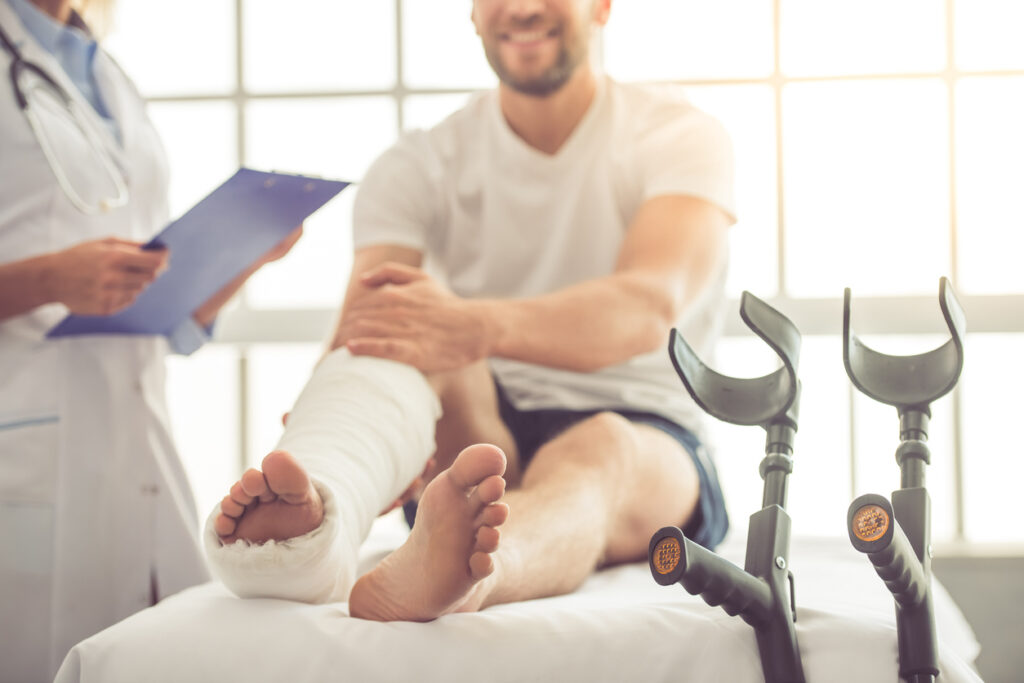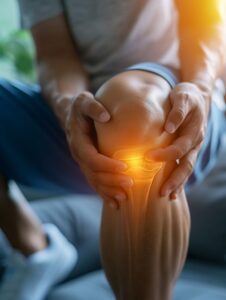Foot and ankle pain is a common problem affecting people of all ages, often impacting daily activities and overall quality of life. Understanding the causes of foot pain and learning simple strategies for relief can help you manage discomfort effectively. In this blog, we will discuss the most common causes, symptoms, and home remedies for ankle pain, along with practical tips recommended by experts like Dr. Ajay Mittal, a renowned orthopedic specialist.
Common Causes of Foot and Ankle Pain
Foot and ankle pain can arise due to various reasons, ranging from minor injuries to chronic medical conditions. Some of the most common causes include:
Plantar Fasciitis
One of the leading causes of heel pain, plantar fasciitis occurs when the tissue connecting the heel to the toes becomes inflamed. This condition often causes sharp pain in the morning or after prolonged periods of sitting.
Sprains and Strains
Ankle sprains and strains are caused by overstretching or tearing of ligaments and muscles. Sudden twisting movements, sports injuries, or uneven surfaces can trigger sprains, leading to swelling, bruising, and limited mobility.
Arthritis
Arthritis, particularly osteoarthritis and rheumatoid arthritis, can affect the joints in the foot and ankle. This results in stiffness, swelling, and persistent pain, especially after long periods of activity.
Flat Feet or High Arches
Structural issues like flat feet or unusually high arches can alter the distribution of weight across the feet, causing discomfort and fatigue. Improper footwear may worsen these conditions.
Tendonitis
Inflammation of tendons, such as Achilles tendonitis, can cause pain at the back of the ankle or along the foot. Overuse or repetitive movements often lead to tendonitis, especially in athletes.
Injuries and Trauma
Fractures, bruises, and other traumatic injuries can result in sudden and severe foot and ankle pain. Timely medical intervention is crucial to prevent long-term complications.
Medical Conditions
Certain medical conditions, including diabetes, gout, and infections, may lead to persistent foot discomfort. Diabetic neuropathy, for example, can cause numbness, tingling, and burning sensations in the feet.
Symptoms to Watch For
Recognizing early symptoms of foot and ankle problems can help prevent worsening conditions. Common warning signs include:
- Swelling and inflammation around the ankle or foot
- Sharp or dull pain while walking or standing
- Redness or warmth in the affected area
- Difficulty in moving the foot or ankle
- Numbness or tingling sensations

Simple Home Care Tips for Foot and Ankle Pain
While professional evaluation is essential for serious conditions, several home remedies for ankle pain and foot pain relief tips can help alleviate mild discomfort:
1. Rest and Elevation
Giving your feet adequate rest reduces strain and prevents further injury. Elevating the foot above heart level can help minimize swelling, especially after an injury.
2. Ice Therapy
Applying an ice pack to the affected area for 15–20 minutes, several times a day, helps reduce inflammation and relieve pain. Always wrap the ice in a cloth to prevent frostbite.
3. Compression
Using an elastic bandage or ankle support can provide stability and reduce swelling in case of sprains or mild injuries. Ensure the bandage is snug but not restrictive, allowing proper blood flow.
4. Footwear Adjustment
Wearing supportive shoes with proper cushioning can prevent further strain on the foot and ankle. Avoid high heels and shoes with poor arch support, especially if you suffer from flat feet or high arches.
5. Gentle Stretching Exercises
Simple stretches, such as calf stretches and ankle rotations, can improve flexibility and reduce stiffness. Balance training and ankle strengthening exercises also enhance stability and prevent recurring injuries.
6. Massage and Warm Compress
Massaging the foot with gentle pressure can improve blood circulation and relieve muscle tension. Alternating with warm compresses may ease soreness and improve mobility.
7. Over-the-Counter Pain Relief
Non-prescription anti-inflammatory medications may provide temporary relief from swelling and discomfort. However, use them as advised and avoid prolonged use without consulting a doctor.
8. Weight Management
Maintaining a healthy weight reduces stress on the foot and ankle joints. Combining regular low-impact exercise with a balanced diet can significantly decrease foot and ankle pain over time.
When to Seek Professional Help
While home care strategies are effective for mild cases, some situations require professional attention:
- Persistent or worsening pain despite home remedies
- Inability to walk or bear weight on the foot
- Severe swelling, redness, or deformity
- Suspected fracture or ligament tear
Experts like Dr. Ajay Mittal can assess your condition and recommend treatments such as physical therapy, orthotics, or minimally invasive procedures if needed.
Preventive Measures for Healthy Feet and Ankles
Prevention is always better than cure. Following these tips can help reduce the risk of foot and ankle problems:
Wear comfortable, supportive footwear
Perform daily stretching and strengthening exercises
Avoid prolonged standing or high-impact activities without breaks
Maintain a healthy weight
Practice proper techniques during sports or physical activities

FAQs About Foot and Ankle Pain
Q1. Can foot and ankle pain be cured at home?
A: Mild pain caused by overuse or minor injuries can often be relieved with home care tips like rest, ice therapy, and stretching. Severe or persistent pain requires professional evaluation.
Q2. How long does it take for ankle sprains to heal?
A: Recovery time depends on the severity of the sprain. Mild sprains may heal in 1–2 weeks, while severe sprains can take several months. Following a structured care plan and consulting experts like Dr. Ajay Mittal ensures proper healing.
Q3. Are flat feet a cause of chronic foot pain?
A: Yes, flat feet can alter the natural alignment of the foot and ankle, leading to discomfort over time. Supportive footwear and orthotics often help alleviate symptoms.
Q4. What are the best exercises for foot pain relief?
A: Calf stretches, ankle rotations, toe curls, and balance exercises are effective for improving flexibility and strength, reducing the risk of recurring pain.
Conclusion
Managing foot and ankle pain requires a combination of understanding its causes, following simple home care tips, and seeking professional advice when necessary. By incorporating lifestyle changes, proper footwear, and targeted exercises, most individuals can find significant relief.
Struggling with foot and ankle pain? Consult Dr. Ajay Mittal today for expert guidance and effective relief solutions!
